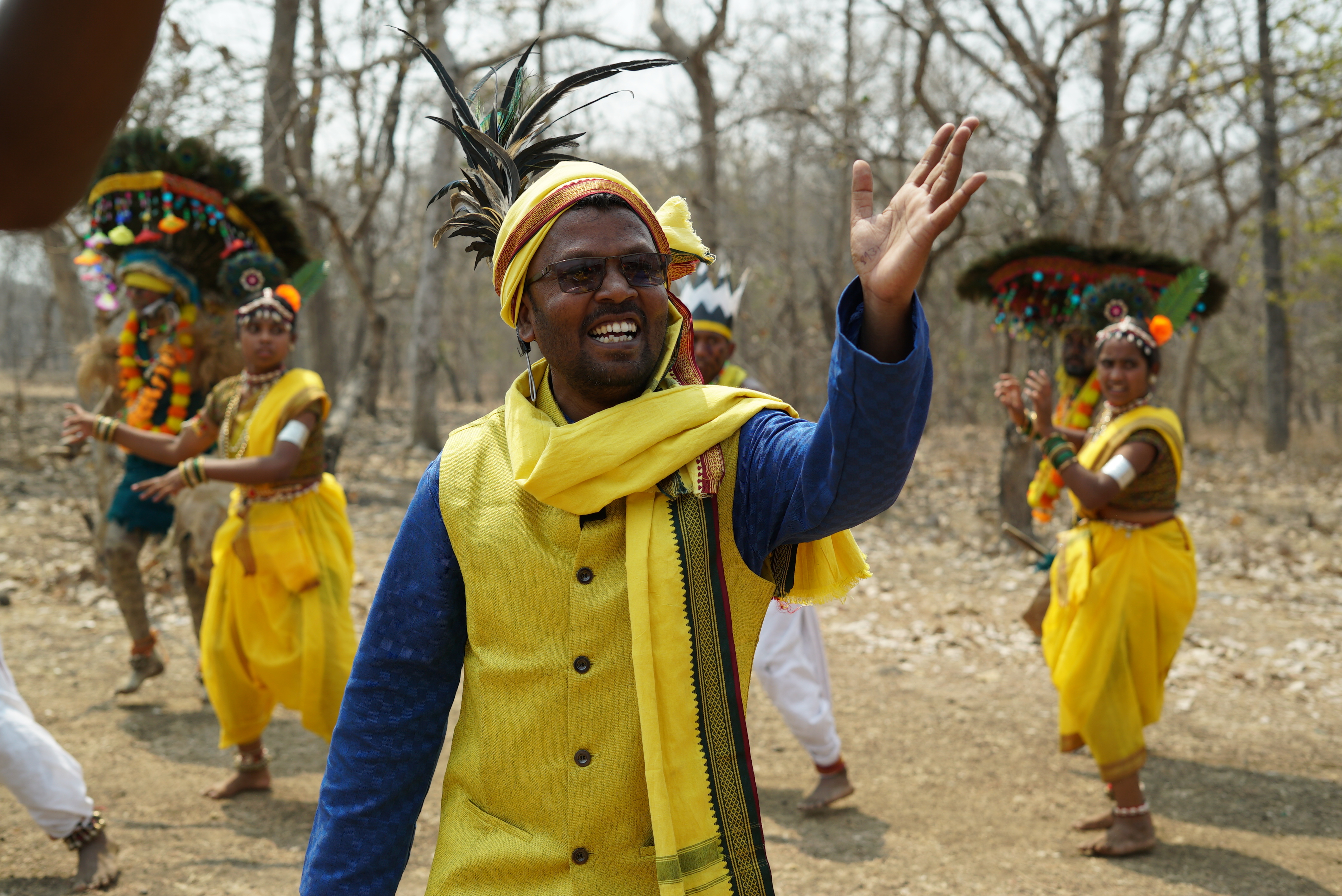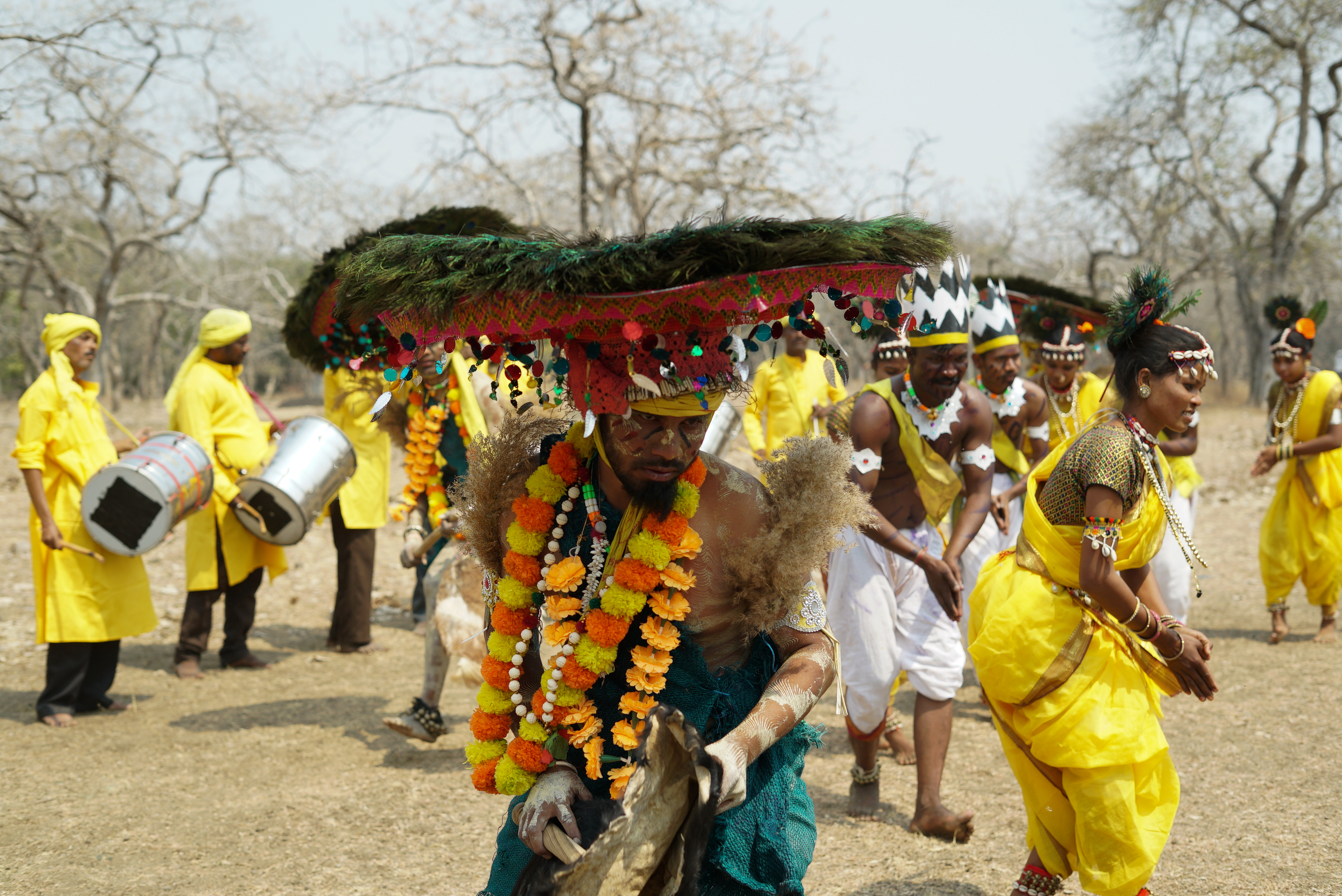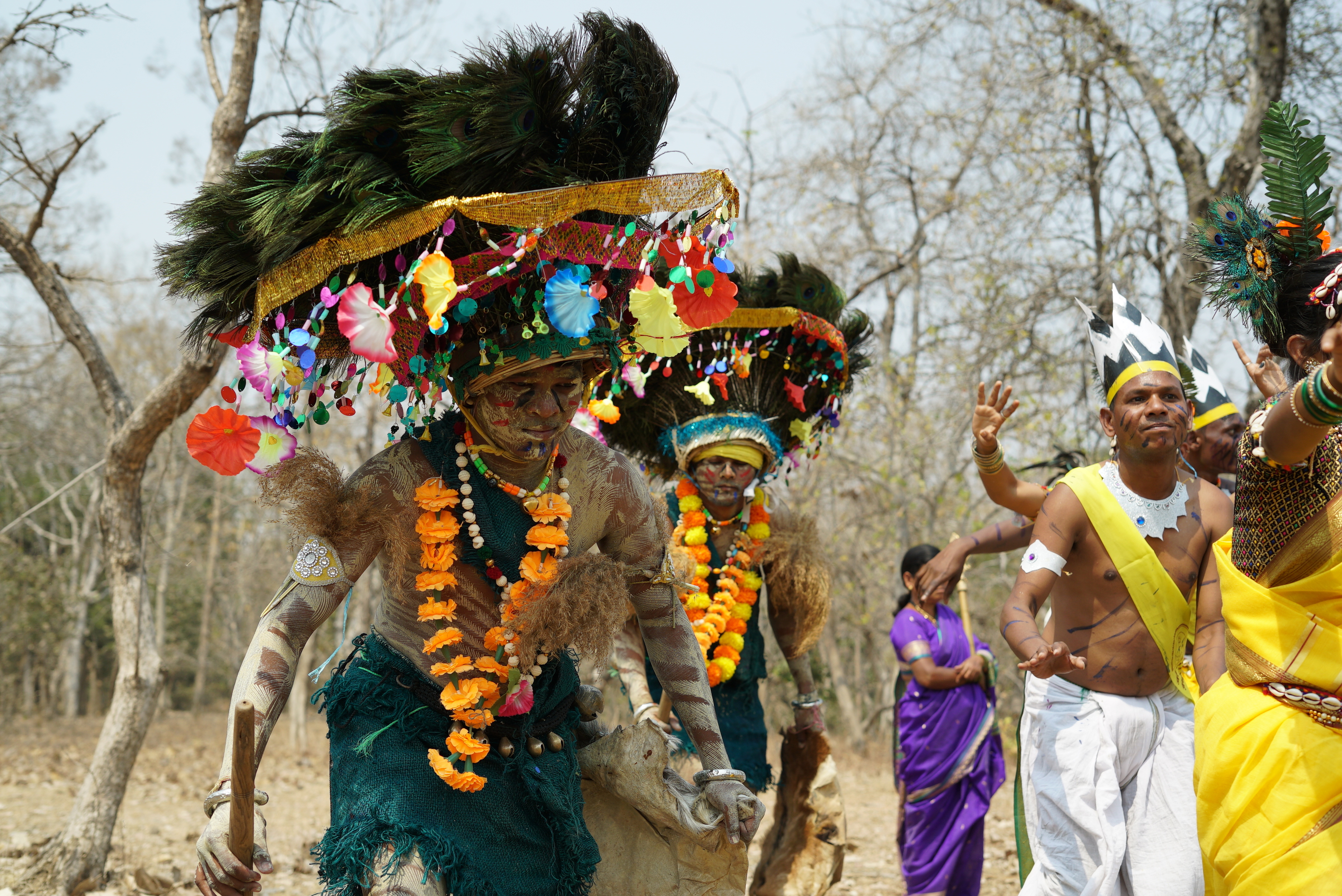
Themes
tribal dance
Ghusadi Dhemsa dance, maharashtra

The Gond, a prominent tribal group in central India, particularly in Maharashtra's eastern districts like Chandrapur, Gadchiroli, Yavatmal, and Nagpur, hold a unique tradition. During the two weeks leading up to Diwali, members of the Gond tribe transform into Ghusadi, or deities. This transformation involves intricate body and face painting, along with the donning of distinctive peacock feather headwear, all in preparation for the Ghusadi Dhemsa dance. This specific dance and its associated rituals are exclusive to the Gond communities residing along the Maharashtra and Telangana border regions.
In the villages where this tradition is observed, Yatmasura Pen, considered the remover of obstacles, is venerated during the fortnight preceding Diwali. As nature worshippers, the Gond community hold Yatmasura in high regard. While the Dhemsa dance is a versatile form, performed at festivals, weddings, or for general evening entertainment, the Ghusadi dancers only wear their special attire during this pre-Diwali period to appease the deities. Consequently, the Dhemsa dance performed in this context is specifically referred to as Ghusadi Dhemsa. The nightly Ghusadi Dhemsa performances begin on the full moon night preceding Diwali and continue until the festival itself. Ghusadi dancers and village men frequently travel to neighboring settlements to perform, providing an opportunity for young village boys to display their dancing prowess.


It is important to note that the Dhemsa dance is not limited to the pre-Diwali Ghusadi tradition. The Dhemsa dance can be performed on any occasion; be it a festival, a wedding celebration, or simply as a form of evening entertainment. This flexibility allows the Gond community to express their cultural heritage and celebrate various life events through the rhythm and movement of the Dhemsa dance
A key element of the Ghusadi Dhemsa dance is the distinctive attire worn by the male performers. They adorn themselves with elaborate body and face paint, transforming their appearance. Furthermore, they wear unique peacock feather hats, which are a defining characteristic of the Ghusadi dancers. These costumes and adornments are essential to the ritualistic transformation into deities and contribute to the visual spectacle of the Ghusadi Dhemsa performance.


The Ghusadi dance is a communal activity, with both men and women from the village participating. The rhythmic movements of the dance are synchronized with the sounds of traditional musical instruments. These instruments include the shehnai, dhol, and nagada, which provide the essential musical backdrop for the Ghusadi Dhemsa. The combination of the dance, music, and costumes creates a vibrant and culturally rich experience.

